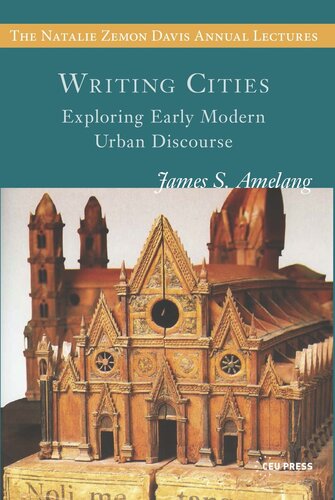

Most ebook files are in PDF format, so you can easily read them using various software such as Foxit Reader or directly on the Google Chrome browser.
Some ebook files are released by publishers in other formats such as .awz, .mobi, .epub, .fb2, etc. You may need to install specific software to read these formats on mobile/PC, such as Calibre.
Please read the tutorial at this link: https://ebookbell.com/faq
We offer FREE conversion to the popular formats you request; however, this may take some time. Therefore, right after payment, please email us, and we will try to provide the service as quickly as possible.
For some exceptional file formats or broken links (if any), please refrain from opening any disputes. Instead, email us first, and we will try to assist within a maximum of 6 hours.
EbookBell Team

0.0
0 reviewsOnly one out of ten early modern Europeans lived in cities. Yet cities were crucial nodes, joining together producers and consumers, rulers and ruled, and believers in diverse faiths and futures. They also generated an enormous amount of writing, much of which focused on civic life itself. But despite its obvious importance, historians have paid surprisingly little attention to urban discourse; its forms, themes, emphases and silences all invite further study. This book explores three dimensions of early modern citizens’ writing about their cities: the diverse social backgrounds of the men and women who contributed to urban discourse; their notions of what made for a beautiful city; and their use of dialogue as a literary vehicle particularly apt for expressing city life and culture. Amelang concludes that early modern urban discourse increasingly moves from oral discussion to take the form of writing. And while the dominant tone of those who wrote about cities continued to be one of celebration and glorification, over time a more detached and less judgmental mode developed. More and more they came to see their fundamental task as presenting a description that was objective.